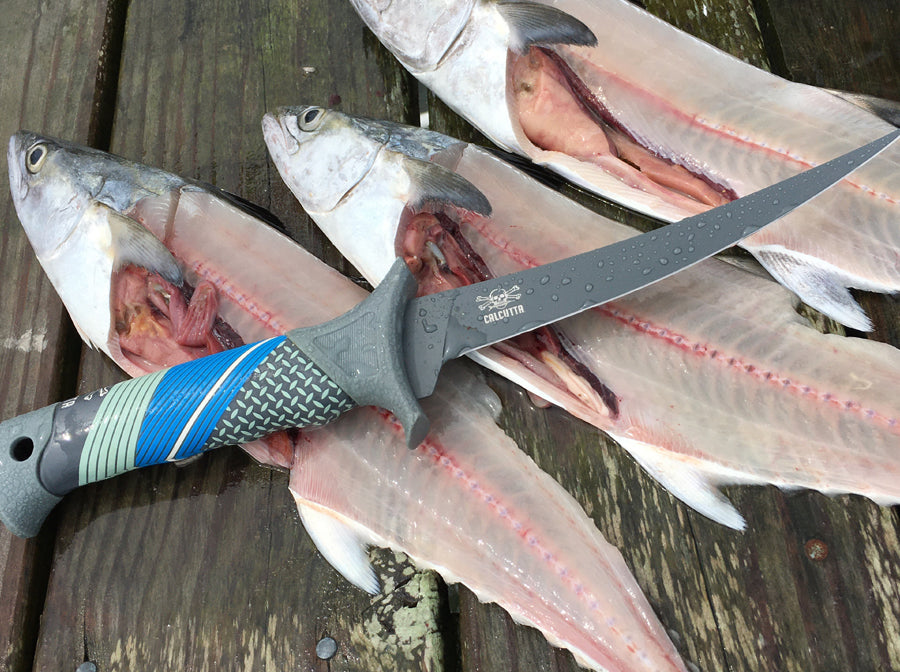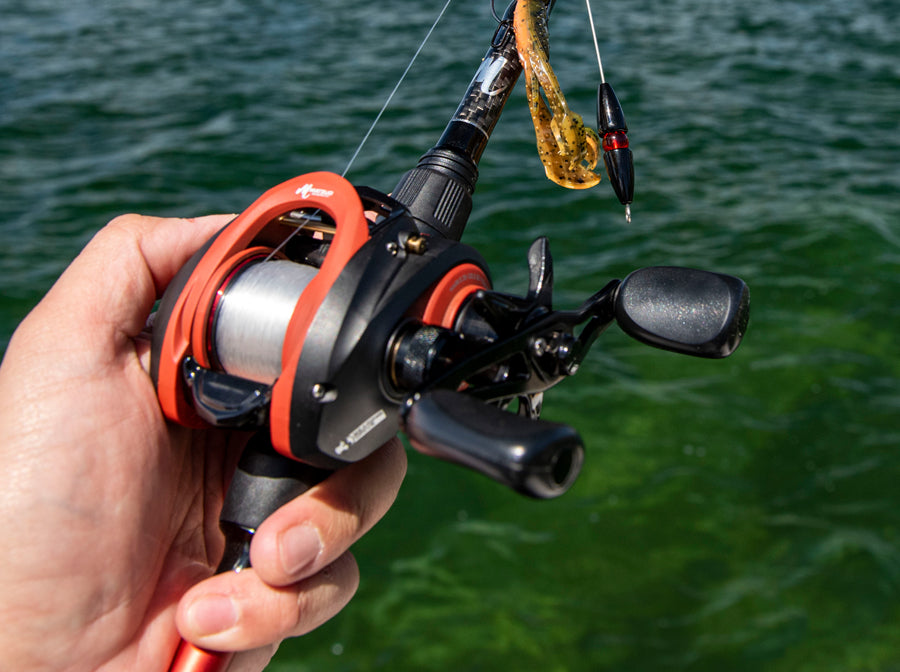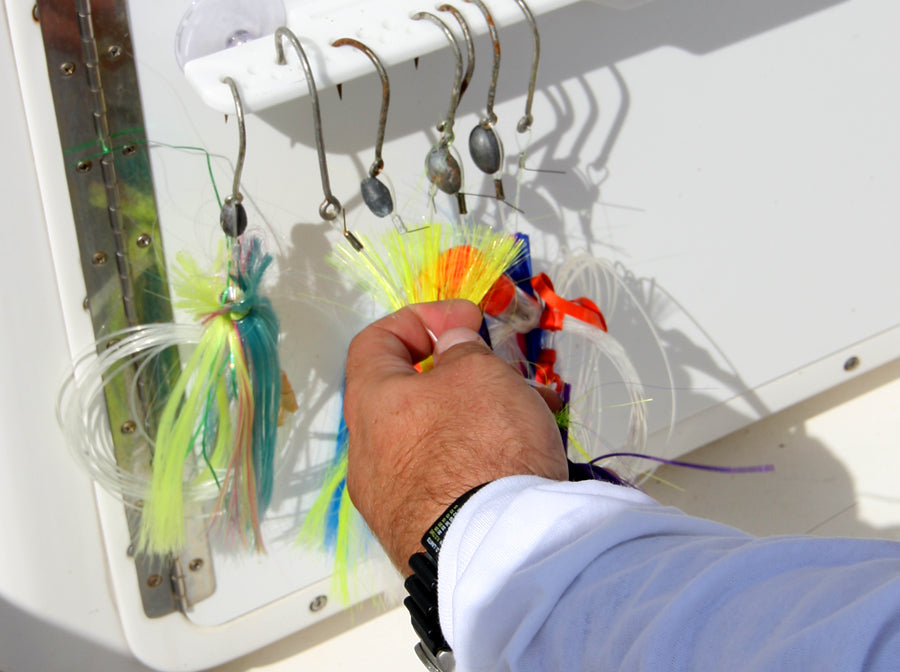Here's A Quick Guide to Filleting Fish -
The fishing trip was a success and your cooler is now loaded with the day’s catch. There are few things more rewarding than firing up the grill and cooking fresh fish that you caught. It’s a great way to provide a delicious, healthy meal for family and friends. But first, all those fish need to be prepared. Filleting fish is a fairly straightforward process. The exact steps usually depend on the size and species of the fish. Cleaning flathead catfish requires a different technique than, say, mahi mahi or flounder. However, knowing the basic process will help you prepare any fish that you bring home. The team at Calcutta Outdoors created this quick guide to help you learn how to fillet a fish. Follow these simple steps and soon you will be able to fillet fish like a pro.
Find a Suitable Surface—Safety is paramount when using a sharp knife. Find a solid place to fillet the fish, such as a sturdy table or kitchen counter. Place one fish on a cutting board. Some cutting boards include a clamp that can help stabilize the fish. If you are cleaning fish in the backyard (not a bad idea since it can get messy), a scrap piece of lumber or plywood will suffice. You can also fillet fish on a log or driftwood when camping or grilling on the beach. As you work, the surface will inevitably become slick. If you have trouble keeping the fish secure, you can use a hammer to nail the fish’s head or tail to the lumber. Non-slip gloves are also helpful when handling slippery fish. The Sea Striker Fillet Kit comes in a carrying case with cutting board, gloves, and several knife options.
Use a Sharp Fillet Knife—The most important tool you’ll need to prepare your catch is a sharp fillet knife. Experienced fishermen often use two knives for filleting fish. A blade that measures 6 inches to 7 inches long works well for carving fillets. Longer 8-inch or 9-inch flexible blades are ideal for removing the skin. Fillet knife kits will usually contain all the cutlery you’ll need in order to clean and fillet fish. Some kits include an easy-to-use sharpener that will quickly hone a dull knife. It’s important to use a sharp blade, not only to produce smooth cuts but to avoid accidentally injuring yourself. Remember: Always cut away from your body.
Remove the Scales— Several species of fish, including bass, crappie, red snapper and trigger fish, have scales. If you plan to leave the skin on the fillet, you will want to remove any scales before cooking. A high-quality fish scaler will make quick work of this task. Fish scalers are easy to use. Simply grip the scaler and place the teeth on the fish’s skin. Move it back and forth against the grain of the fish scales, using steady, but light pressure. Too much force will cause the scaler to rip through the skin and tear into the meat. If you don’t have a scaler on hand, you can substitute the back edge of a knife blade.
Make the Cut—To carve the fillet, make a vertical cut from the top (dorsal) to the bottom of the fish immediately behind the fish’s head. The blade should slice directly into the fish and go as deep as the fish’s spine. Then rotate the knife blade and start cutting toward the fish’s tail. Use the backbone as a guide for the correct depth, and keep the knife blade as flat as possible. Pressing the blade tight against the backbone, follow the dorsal fin and slice toward the tail. After you remove the fillet, flip the fish over and repeat this process.
Most bass and crappie, yellowtail and other small to medium-size fish can be filleted with a single pass from the knife. King mackerel, tuna and other larger fish usually demand multiple cuts in order to free the thick, wide fillets.

Remove the Ribs and Bones—If a fillet contains rib bones and “pin” bones, lay it on the cutting board with the skin side down. Carefully remove the bones with a fillet knife, needle-nose pliers or tweezers. Depending on the fish species, you may be able to remove the rib bones by slicing underneath them in a motion similar to filleting. A serrated blade can help with tough rib bones. Use caution in order to avoid damaging the fillet.
Cut Out the Blood Line—Some larger fish species, including wahoo and striped bass, have what is called a “blood line,” or darker meat near the fish’s spine. Most fishermen will remove the blood line from the fillets.
Skin the Fish—Prefer skinless fillets? Removing the skin from the fillet is a simple and quick step if you have the proper equipment. A sharp fillet knife with a flexible blade, typically 8 inches to 9 inches in length, is required. Lay the fillet flat on the cutting board with the skin side down. Using smooth strokes, slice slowly and carefully (away from yourself) to remove the skin. Starting out, you’ll probably need to use several cuts. With experience, you will be able to remove the skin in only one or two strokes. Follow the knife with your free hand to help separate the meat from the skin.
Keep a Cooler Ready—When cleaning fish, keep a cooler filled with ice nearby. As you remove the fillets, lay them flat on the ice inside the cooler. The ice will chill the meat, keeping the fillets fresh until you transfer them to a refrigerator, freezer or your grill.
Pro Tip: It’s easy to work up a sweat when cleaning fish. The Calcutta Outdoors team always fills a second cooler with our favorite ice-cold beverages.



